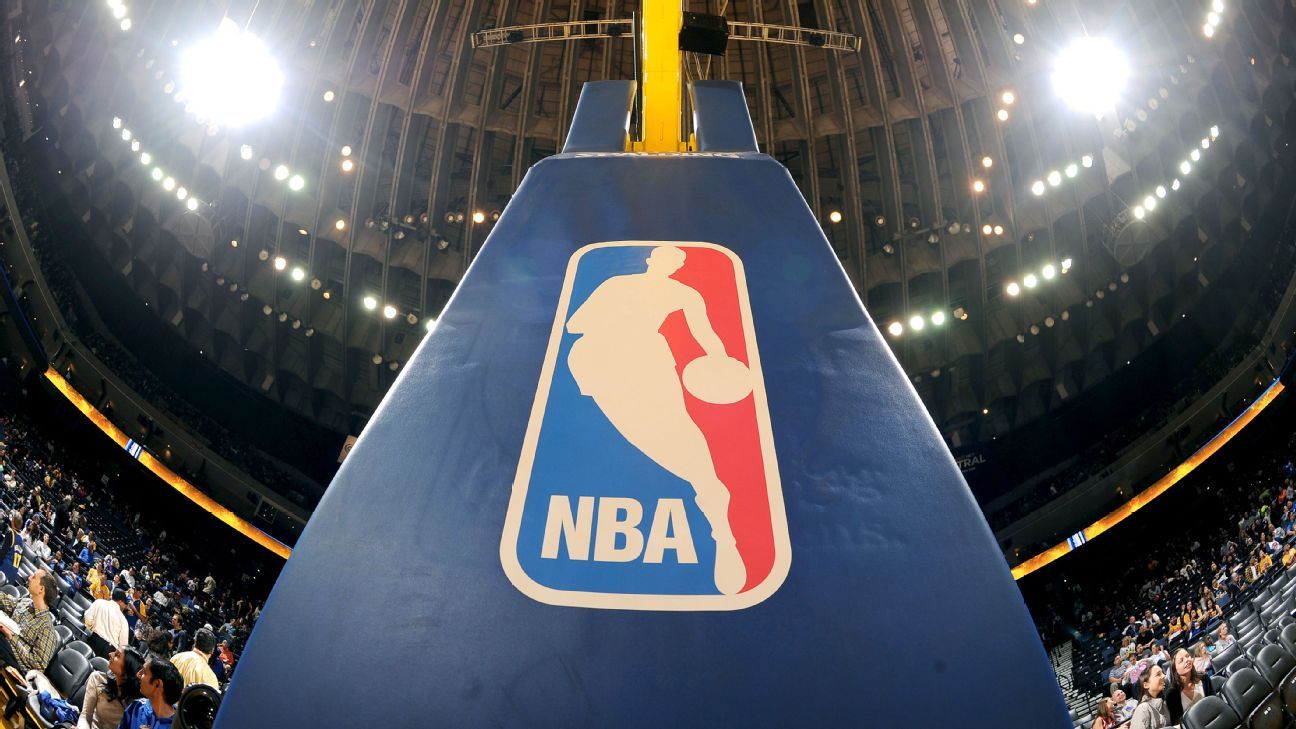The NBA has reached an agreement with the National Basketball Players Association to extend until September the 60-day window that preserves the league’s right to terminate the collective bargaining agreement in the wake of the coronavirus pandemic, sources told ESPN.
For now, the extension staves off the NBA’s ability to trigger the nuclear option to its economic crisis — terminating the CBA under the force majeure event provision, which it could’ve done within two months of the March 11 shutdown of the league.
NBA commissioner Adam Silver described a stark financial landscape for the league during a Friday conference call with the NBPA membership, starting to lay out the league’s gloomy financial forecast of owners and arena operators suffering losses from not only the NBA shutdown but also the loss of concerts and events in those empty buildings.
“This CBA was not built for an extended pandemic,” Silver told the NBPA membership, according to audio obtained by ESPN. “There’s not a mechanism in it that works to properly accept a cap when you’ve got so much uncertainty; when our revenue could be $10 billion or it could be $6 billion. Or less.”
There’s optimism that the NBA and union can work through these issues and agree on how the league’s financial landscape will be recalibrated on a number of issues, including the 2020-21 salary-cap and luxury tax thresholds, sources said.
The NBA’s current CBA extends through the 2023-24 season, with a mutual opt-out available after the 2022-23 season.
This extension allows the league and union to continue trying to resume the 2019-20 season this summer, salvaging some regular-season games, carrying out the playoffs and recouping some lost revenue.
In a normal year, the NBA and NBPA calculate the new salary cap between the end of the NBA draft and the start of free agency. This time, sources said, the league has heard the urgency of teams to have those new cap and luxury tax figures before the draft because the potentially dramatic shift in figures will affect how teams approach deal-making at the draft.
Silver told the players on Friday that expenditures by fans — through gate receipts, concessions and other game-night receipts — constitute approximately 40% of the league’s revenue, according to audio of tape obtained by ESPN.
The league would restart this season without fans in venues, and Silver held out the possibility on the call that it could also be possible for the start of the 2020-21 season. The NBA and NBPA share revenue on a 51-49 split of basketball-related income (BRI).
Among the complexities and financial challenges for the NBA and union: the uncertainty surrounding a number of next season’s revenues make the normal salary-cap projections impossible. The NBA won’t know whether fans will be allowed to attend games, or how profoundly the continuing economic crisis will impact the league’s customers, or whether the league could get shut down again with a second wave of the pandemic.
The financial implications of the league’s revenue bottoming out without fans in arenas has the potential to devastate teams, especially smaller-market franchises dependent on gate receipts and revenue sharing from big markets such as Los Angeles, New York and Golden State. In a scenario where gate receipts are gone — or dramatically limited — big-market teams will not have the revenue to share.
In worst-case scenarios, some small-market teams tell ESPN that they fear they could lose north of $20 million in revenue sharing next season. Those kinds of projections can greatly impact competitive balance and the kind of financial models that the NBA and NBPA would presumably try to avoid in these upcoming discussions.
For example, the CBA has a projected 2020-21 salary cap of $115 million, with a luxury tax threshold of $139 million. With the reality of lost revenues coming, some teams fear that cap and tax could fall as far as $25 million to $30 million. Without the league and union negotiating a new mechanism for the cap in the coming months, the league could be facing 25 of its 30 teams trapped in luxury tax payments based on projected payrolls — something that would paralyze free agency and many organizations’ ability to operate financially.
For example, Golden State’s projected tax penalty of $45 million would rocket to $160 million before free agency even started.
Essentially, how the NBA and NBPA proceed setting the cap for 2020-21 and future years will be partly based on how much those sides believe this season’s financial losses are an anomaly or an indicator that future revenue and BRI will continue to drop or stagnate.
“Our whole system right now in setting a cap to the next season is based potentially off the prior season — and then a projection off the prior season,” Silver told the NBPA membership on the Friday call. “And we’re looking at a scenario where potentially we would be playing without fans next year. … Roughly 40% of our revenue is generated from … selling tickets … the suites … the activities that happen in the arena.”
ESPN front-office insider Bobby Marks contributed to this report.
